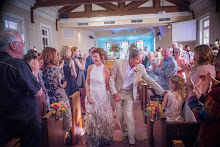Dec.29: Learning, Fun and Feldenkrais®
SENSING, LEARNING, FELDENKRAIS®, AND FUN
The Feldenkrais Method® is an amazing and powerful system of body/mind learning that enables people to move, breathe and think with greater ease and flexibility. It doesn’t set out to “fix” people. If you have a sore back, the idea isn’t that there is anything wrong with your back. The understanding is that sore backs and necks and shoulders and hips, as well as inability to function after a stroke or injury, as well as troubles with perfecting some skill in golf, tennis or yoga, come from a lack of certain abilities in the whole system to organize at a higher level. The problem, the so-called problem, is between the ears, in our brains.
This could sound unappealing, brains being a bit scary if we aren’t Bill Gates or Steven Hawkins, but brains are what got us learning to speak and sit up and crawl and walk, and let us figure out how to get to these words, wherever you have found them. As I mentioned in the last section, learning is part of happiness, and one of the key aspects of the Feldenkrais work is that it’s fun. It’s fun to relearn, or re-experience ways of moving we’ve “left behind,” or never really perfected.
Take crawling. If you were to stop reading this for a few moments and get down on the floor and crawl around a bit, something of your youthful joy in life and discovery might return to you.
Did you take a chance to have some fun, to do something different than your usual routine? We all read. We very few of us take some time to crawl. Go ahead and give it a go, if you didn’t yet.
I did it and the temptation to avoid it was strong, since I write these words first time around in a cozy warm bed, and it was cold to get out and dress and crawl around, but it was fun, indeed. I’m glad I did it. It reawaked old and very alive parts of me. I enjoyed sensing one hand after another touch down onto the floor. I enjoyed being on “all fours,” as it is called, a set up for the single most useful yoga asana, called Bedelasana.
In this asana, or pose, you are on “all fours” and you breathe in and puff out your belly and arch your back and let the back of your head and your butt go toward each other. Then you breathe out as you pull your belly and navel back toward your spine, bending forward as you push your back up into the air and lower your head and tuck your tailbone under. It’s smooth and enjoyable, rounding and arching. It helps breath and spine and feeling good about life. It’s easy. It helps the neck remember that it can be all the way down to the tailbone. It helps your pelvis remember how crucial it is to organized and elegant movement.
In Feldenkrais we add on the eyes, looking down between the legs and then up to the ceiling as the head goes up and down. We pay attention to the front and the back of the pelvis as it rotates toward and away from the face. We notice the change of pressure on hands and knees. We play around: what if your eyes were to go up as your head goes down, and your eyes were to go down as your head goes up. This seems “hard,” but it’s only hard if we forget to play, forget to explore. We can go slowly, we can make smaller movements. If we put our attention on learning instead of instantly succeeding, we can discover if we are holding our breathing, or tensing our jaw.
Then we can let this extra work go and learn to perfect something that seems strange and almost impossible. To make the impossible possible, the possible easy and the easy elegant: this is an aim of the Feldenkrais work. Try the eyes and head in opposite directions. See if you can slow down and enjoy the learning, and come to a way of doing this in a relaxed and easy manner. Elegance cam come latter.
But for now, see what it’s like. See if you are giving yourself a hard time if you don’t learn something instantly. Or you want to give it up if you don’t have instant “success.” Consider how this attitude prevents you from learning all sorts of things you’d like to learn.
And then, after you’ve perfected the head and eyes moving in opposition, let them rise and fall together and see if you can feel a great ease and connection of your head and eyes and neck and breathing. It’s fun to be a learner. Welcome to the path.






0 Comments:
Post a Comment
Subscribe to Post Comments [Atom]
<< Home